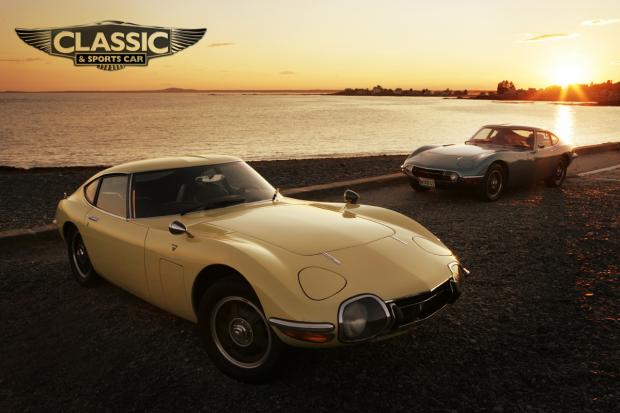
The fabulous Toyota 2000GT proved that the Japanese car industry was capable of more than mass-production. Mick Walsh drives a trio of eastern rarities.
What a difference 10 years can make. In 1955, 700,000 visitors jostled around the open-air Tokyo Motor Show in Hibiya Park to admire such western cast-off designs as the Hillman Minx and Henry J, both built under licence in Japan. Fast-forward a decade and it was a different world inside the Tokyo International Trade Center in Harumi.
Talk of the ’65 show was a dazzling white coupé with sleek fastback style, riding on glitzy chrome Borrani wires. Smitten Japanese car fans were made to ogle from behind the barriers and Toyota wasn’t giving much away about specification other than its 2-litre capacity and plans for both road and race versions. The more eagle-eyed car nut might have spotted a backbone chassis, independent suspension and disc brakes, but the chances of any of the 1½ million visitors getting behind the wheel were as slim as landing a date with Bond girl Akiko Wakabayashi.
This was to be a hand-built, high-priced exotic, a flagship to prove that Toyota could build more than trusty Publicas and Crowns. The cute 790cc Publica Sport had kicked off Toyota’s image upgrade a year earlier, but here was a dream GT to rival the best from Coventry, Stuttgart and Detroit. Although its influences were clearly European, with blatant E-type styling cues, the 2000GT was much more than a copycat and was to prove considerably more exclusive than anything outside Modena.

Forty years since the Yamaha works started delivering cars to showrooms, few western enthusiasts have even seen one, let alone driven it. Lucky members of the exclusive 2000GT drivers’ club are smitten by the most valuable Japanese car ever built, none more so than Peter Starr and Bob Tkacik. Inside their immaculate workshop in Biddeford, USA there are more GTs than in the whole of Europe and more spares than Toyota has in stock. These retired car dealers are no blinkered obsessives: they could – and do – drive almost any Ferrari or Porsche. But from all perspectives, be it engineering, build quality, styling and, above all, driving, they firmly believe the 2000GT is one of the best sports cars ever.








